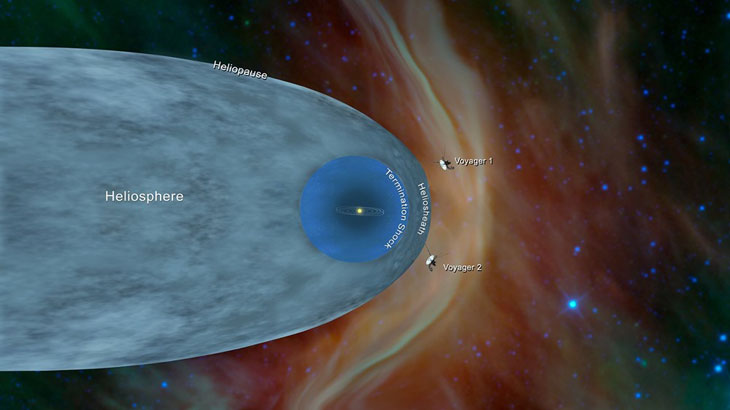US Space Agency engineers are currently trying to determine why the Voyager 1 space probe is returning invalid telemetry data as it continues to sink into interstellar space.
A long journey
Launched in 1977, Travel 1 is currently 23.3 billion kilometers from the Earth, a distance so great that it takes 20 hours and 33 minutes for a radio signal to reach it from the mission control center. Despite some 45 years of service, during which the craft was brought to fly by Jupiter in 1979, then Saturn and its giant moon Titan in 1980, its instruments continue to return data.
It achieves this thanks to its three radioisotope thermoelectric generators (RTG) fueled with plutonium, which should continue to provide energy to the probe until 2025. However, Travel 1 and her twin Voyager 2 have been reconfigured from time to time to overcome power drops and malfunctions, and to ensure that they continue to do their job until the RTG stop working.
The high levels of cosmic radiation to which the space probe was exposed for decades also affected the electronics on board, engineers from the NASA are currently monitoring its various systems closely.

The current malfunction concerns its articulation and attitude control system (AACS). Although Travel 1 receives and executes commands from the Earth and returns data from its scientific instruments, theAACSwhich helps keep the probe’s main antenna pointed at Earth, returns seemingly random data that doesn’t correspond to any state the instrument might be in.
Obscure causes
” Such mystery is normal at this point in the Voyager mission. “, valued Suzanne Doddproject manager for Voyager 1 and 2 at NASA’s Jet Propulsion Laboratory to Pasadena, in California. ” These spacecraft are both nearly 45 years old, which far exceeds the originally planned operating life. [qui était de 10 ans]. »
According to NASAthe malfunction was not serious enough to trigger the system’s fail-safe protection systems. Travel 1 and the signal does not lose its strength, which shows that the antenna is always pointing in the right direction. The team is looking to locate the source of the problem and determine if it involves other systems on the spacecraft. If the source cannot be identified, the alternative could be to switch to a redundant hardware system.
” We are also in interstellar space, a high level radiation environment in which no spacecraft had operated before. The engineering team will therefore have to meet major challenges. But I think if there is a way to solve this problem with AACS, our team will find it.. »
[related_posts_by_tax taxonomies=”post_tag”]
The post NASA’s Voyager 1 Probe Returns Mysterious Data From Interstellar Space appeared first on Gamingsym.

